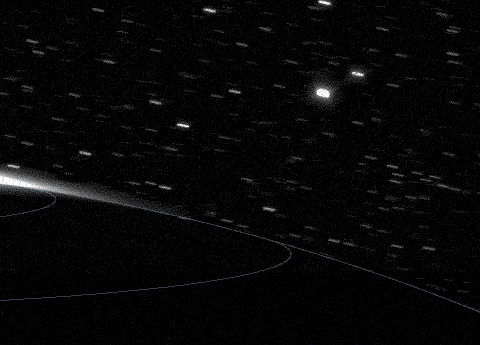
auroras (aurori? aurorae?) occur because energetic particles coming from the sun react with a planet's magnetic field. magnetic fields naturally have directional field lines which act as "traffic lanes" that guide the electrically charged solar wind particles to the north and south magnetic poles.
once concentrated at the poles, the particles begin to react with the gas in the planet's upper atmosphere. the atoms and molecules of the atmospheric gas absorb some of the energy of the foreign particles and become "excited." when they get exhausted from being excited, they return to their relaxed state by sending off a photon of light which we see collectively as the glow of an aurora.
the type of gas in the atmosphere that reacts with the solar particles determines the color of the aurora we see. on earth, the gas is mostly atomic oxygen (which produces a red glow), molecular nitrogen (blue), and molecular oxygen (green).
the animated image of saturn's aurora is almost as mesmerizing as voyager's approaching view of jupiter in the late 1970s.











No comments:
Post a Comment